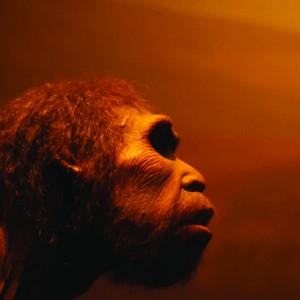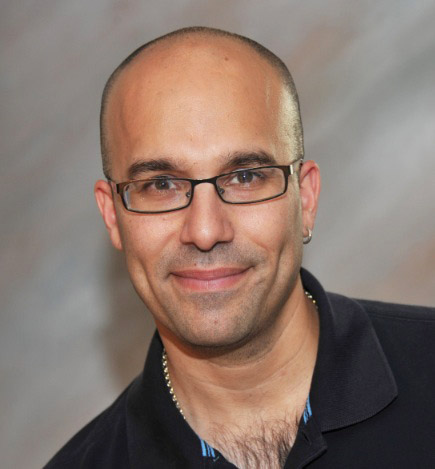 Scientists at the State University of New York at Buffalo have discovered that genetic variations associated with certain modern medical disorders reach back to distant antiquity, predating the Neanderthals and Denisovans (another ancient hominin about which little is known due to scarcity of remains), as well as contemporary humans. Research led by SUNY Buffalo assistant professor of biological sciences Omer Gokcumen, PhD compared modern human DNA to that of Neanderthals and Denisovans, and found that genetic deletions associated with various aspects of human health, including psoriasis and Crohn’s disease, as well as growth hormone treatment response, likely originated in a common ancestor of all three species about 500,000 years ago.
Scientists at the State University of New York at Buffalo have discovered that genetic variations associated with certain modern medical disorders reach back to distant antiquity, predating the Neanderthals and Denisovans (another ancient hominin about which little is known due to scarcity of remains), as well as contemporary humans. Research led by SUNY Buffalo assistant professor of biological sciences Omer Gokcumen, PhD compared modern human DNA to that of Neanderthals and Denisovans, and found that genetic deletions associated with various aspects of human health, including psoriasis and Crohn’s disease, as well as growth hormone treatment response, likely originated in a common ancestor of all three species about 500,000 years ago.
In a new study published in the journal Molecular Biology and Evolution, Dr. Gokcumen and his research colleagues compared modern human genomes with those of Neanderthals and Denisovans. Genomes of these earlier forms of humans had been previously sequenced using human remains.
The primary research interest of the Gokcumen Evolutionary and Anthropological Genomics Lab at the Department of Biological Sciences at SUNY, Buffalo is investigation of a diverse set of questions in anthropology and evolutionary biology using genomic tools. The lab’s current focus is studying the impact of genomic structural variation to human evolution. The researchers explain that genomic structural variants (SVs) involve differences in copy number (i.e., deletions and duplications), orientation (i.e., inversions) or genomic location (i.e., translocations) of large segments of DNA between individuals.
The researchers cite recent studies demonstrating that SVs constitute a greater portion of the human genomic variation as compared to single nucleotide variants, play an important role in human disease and evolution, and believe that SVs represent a huge and unexplored area of evolutionary genomics ripe for studies focusing on their impact to human disease and biology.
The Open Access study published by Oxford University Press on behalf of the Society for Molecular Biology and Evolution, entitled “The Evolution and Functional Impact of Human Deletion Variants Shared with Archaic Hominin Genomes“ (Mol Biol Evol. 2015; doi:10.1093/molbev/msu405) is coauthored by Omer Gokcumen and Yen-Lung Lin of the State University of New York at Buffalo Department of Biological Sciences; Pavlos Pavlidis of the Institute of Molecular Biology and Biotechnology (IMBB) at the Foundation of Research and Technology Hellas at Heraklion, Crete, Greece; Emre Karakoc of the Max Planck Institute for Evolutionary Biology Department of Evolutionary Genetics at Plön, Germany; and Jerry Ajay of the State University of New York at Buffalo Department of Computer Science and Engineering.
The coauthors explain that allele sharing between modern and archaic hominin genomes has been subject to variously interpretations, including its possible origins in ancestral genetic structure or through non-African introgression from archaic hominins.
However, they caution that evolution of polymorphic human deletions shared with archaic hominin genomes have yet to be studied. In this study, they identified 427 polymorphic human deletions shared with archaic hominin genomes, approximately 87% of which they note originated before Human-Neanderthal divergence (ancient) and only approximately percent of which have been introgressed from Neanderthals (introgressed).
 Recurrence, incomplete lineage sorting between human and chimp lineages, and hominid-specific insertions constitute the remaining approximately 4 percent of allele sharing between humans and archaic hominins, and the research team observed that ancient deletions correspond to more than 13 percent of all common (>5% allele frequency) deletion variation among modern humans.
Recurrence, incomplete lineage sorting between human and chimp lineages, and hominid-specific insertions constitute the remaining approximately 4 percent of allele sharing between humans and archaic hominins, and the research team observed that ancient deletions correspond to more than 13 percent of all common (>5% allele frequency) deletion variation among modern humans.
The research team’s analyses indicate that genomic landscapes of both ancient and introgressed deletion variants were primarily shaped by purification through selection and elimination of large and exonic variants. They found 17 exonic deletions shared with archaic hominin genomes, including ones leading to three fusion transcripts. The affected genes are involved in metabolism of external and internal compounds, growth and sperm formation, as well as susceptibility to disorders like psoriasis and Crohn’s disease that afflict(ed) humans and Neanderthals in common.
They say their analyses suggest that these exonic deletion variants have evolved through different adaptive forces, including balancing and population-specific positive selection, and that their findings reveal genomic structural variants that are shared between humans and archaic hominin genomes are common among modern humans and can influence biomedically and evolutionarily important phenotypes.
The full Open Access research paper can also be accessed here in PDF format:
http://mbe.oxfordjournals.org/content/early/2015/01/22/molbev.msu405.full.pdf
Sources:
Department of Biological Sciences State University of New York at Buffalo
Molecular Biology and Evolution
Gokcumen Lab For Evolutionary And Anthropological Genomics SUNY, Buffalo

